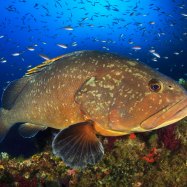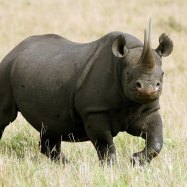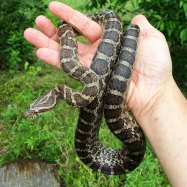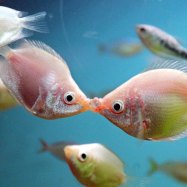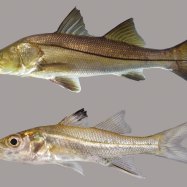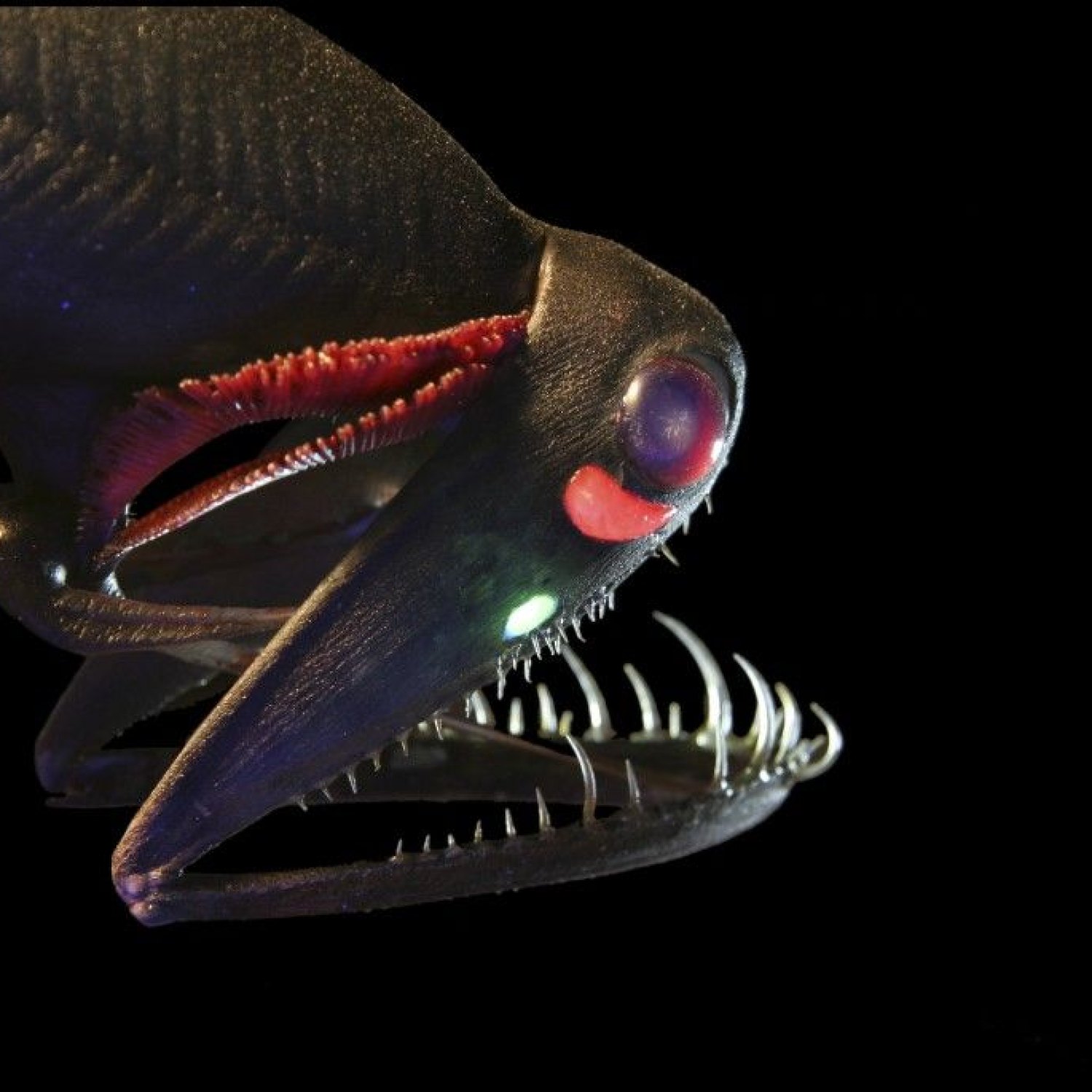
Stoplight Loosejaw
Up to 20 cm
The Stoplight Loosejaw, a small fish found in the deep-sea, has a unique elongated and slender body shape. Measuring only up to 20 cm, it belongs to the Stomiidae family. Known for its bright red, green, and yellow lights, it uses this bioluminescent display to attract its prey. Fascinating, right? #StoplightLoosejaw #deepseacreatures #bioluminescence
Animal Details Summary:
Common Name: Stoplight Loosejaw
Kingdom: Animalia
Habitat: Deep-sea
The Enigmatic Stoplight Loosejaw: An Exquisite Deep-sea Predator
Deep beneath the surface of the world's oceans lies a mysterious and fascinating world that few have seen. The depths of the sea are home to some of the most unique and intriguing creatures, and one of them is the Stoplight Loosejaw (Malacosteus niger). This small fish, also known as the "Viperfish," is a member of the Stomiidae family, and it has some remarkable features that set it apart from other deep-sea creatures. In this article, we will explore the intriguing characteristics of the Stoplight Loosejaw, from its alluring bioluminescent lure to its widespread distribution in the depths of our oceans Stoplight Loosejaw.The Stoplight Loosejaw's Kingdom, Phylum, Class, and Order
The Stoplight Loosejaw belongs to the animal kingdom, making it a multicellular, eukaryotic organism. It is further classified as a member of the phylum Chordata, which includes all vertebrates. Within this phylum, the Stoplight Loosejaw is part of the class Actinopterygii, also known as ray-finned fishes. This class encompasses more than 33,000 species of fish, making it the largest class in the vertebrate group. The Order to which the Stoplight Loosejaw belongs is Stomiiformes, which comprises around 360 species of deep-sea fish, including anglerfish and deep-sea smelts.The Stoplight Loosejaw's Habitat and Geographical Distribution
The Stoplight Loosejaw is found in the depths of the world's oceans, particularly in the deep-sea zone, also known as the twilight zone. This zone lies between 650 and 3,300 feet below the surface of the sea, where the sunlight can barely penetrate. The deep-sea is a harsh and inhospitable environment, characterized by extreme pressure, little to no light, and cold temperatures. Yet, the Stoplight Loosejaw thrives in this environment Seal. It has a widespread distribution and can be found in all the world's oceans, from the tropical to the temperate regions. However, they are more concentrated around the equator, where the ocean's depth is less, and food is more abundant.The Stoplight Loosejaw's Remarkable Bioluminescent Lure
One of the most fascinating features of the Stoplight Loosejaw is its bioluminescent lure. This unique feature is what gives the fish its other common name, "Stoplight." The Stoplight Loosejaw has a photophore (light-producing organ) located underneath its eyes that produces a red light. This red light acts as a lure, attracting prey towards the fish's jaws. Unlike most deep-sea creatures that produce blue or green light, the Stoplight Loosejaw's lure emits red light due to the presence of a pigment called chlorophyll, which it obtains from its diet of small crustaceans known as copepods.The bioluminescent lure of the Stoplight Loosejaw serves as a form of camouflage. Predators lurking in the dark deep-sea are not able to see red light, making it difficult for them to spot the fish as it moves and hunts. Additionally, the red light helps the Stoplight Loosejaw communicate with other members of its species, as they can see one another's red light. This helps them stay together and avoid interspecies interactions.
The Stoplight Loosejaw's Feeding Method
The Stoplight Loosejaw's bioluminescent lure is not only for attracting prey; it also plays an important role in its feeding method. This fish is a carnivore, feeding primarily on small crustaceans, such as copepods and shrimp. It uses its protruding jaw, which is lined with rows of sharp teeth, to capture and immobilize its prey. Once the prey is within striking distance, the Stoplight Loosejaw quickly opens its mouth, creating a suction force that sucks the prey into its mouth. It also has an expandable stomach that allows it to consume prey larger than its own body.The bioluminescent lure of the Stoplight Loosejaw is also used in a process known as counterillumination. This strategy involves producing light that matches the surrounding light to make the fish almost invisible to predators. It allows the Stoplight Loosejaw to blend in with the ambient light, making it difficult for predators to detect its silhouette against the faint light of the deep sea.
The Unique Coloration and Body Shape of the Stoplight Loosejaw
The Stoplight Loosejaw is a small fish, growing up to 20 cm in length. Despite its small size, it has a body shape that is elongated and slender, resembling a snake. This body shape makes it an adept swimmer, enabling it to move swiftly and effortlessly through the water.Moreover, the Stoplight Loosejaw's body coloration is also quite interesting. Its body is dark brown to black, which is a common coloration for deep-sea creatures. However, it has a unique feature that sets it apart – its eyes. The Stoplight Loosejaw has large, bulging eyes, giving it a distinctive "alien-like" appearance. These eyes are also very sensitive to light, allowing the fish to see and navigate through the darkness of the deep-sea.
The Stoplight Loosejaw's Country of Origin and Location
Unlike most animals that have a specific country of origin, the Stoplight Loosejaw is found in all the world's oceans. Its presence has been documented in the Pacific, Atlantic, and Indian Oceans, as well as the Mediterranean Sea. This widespread distribution makes it difficult to determine the fish's exact country of origin. However, some studies have suggested that the Stoplight Loosejaw may have originated in the Atlantic Ocean, from where it spread to other oceans.The Mystery and Beauty of the Stoplight Loosejaw
The Stoplight Loosejaw may be a small and lesser-known deep-sea predator, but it has remarkable adaptations that make it a fascinating creature. From its alluring bioluminescent lure to its unique feeding method, this small fish is truly a wonder of the sea. Its widespread distribution also adds to its intrigue, as it can be found in the depths of all the world's oceans. As we continue to explore and learn more about the deep-sea, it is certain that the Stoplight Loosejaw will continue to captivate our imaginations and reveal more secrets about this mysterious and beautiful environment.

Stoplight Loosejaw
Animal Details Stoplight Loosejaw - Scientific Name: Malacosteus niger
- Category: Animals S
- Scientific Name: Malacosteus niger
- Common Name: Stoplight Loosejaw
- Kingdom: Animalia
- Phylum: Chordata
- Class: Actinopterygii
- Order: Stomiiformes
- Family: Stomiidae
- Habitat: Deep-sea
- Feeding Method: Bioluminescent lure
- Geographical Distribution: Worldwide
- Country of Origin: Not applicable
- Location: Deep-sea
- Animal Coloration: Dark brown to black
- Body Shape: Elongated and slender
- Length: Up to 20 cm
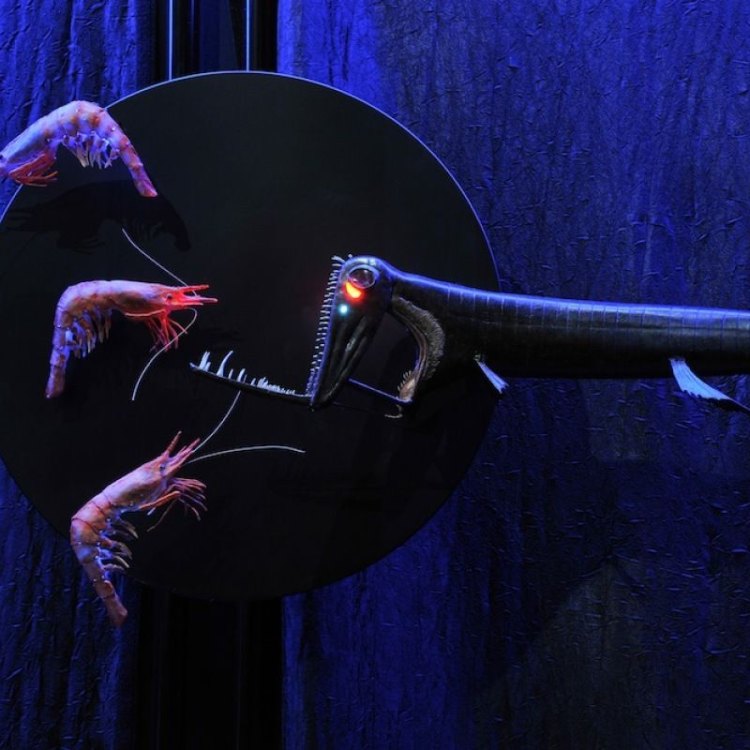
Stoplight Loosejaw
- Adult Size: Up to 20 cm
- Average Lifespan: Unknown
- Reproduction: Oviparous
- Reproductive Behavior: Unknown
- Sound or Call: Unknown
- Migration Pattern: Unknown
- Social Groups: Solitary
- Behavior: Lurker and ambush predator
- Threats: Unknown
- Conservation Status: Unknown
- Impact on Ecosystem: Unknown
- Human Use: Not applicable
- Distinctive Features: Large jaws, rows of sharp teeth, bioluminescent lure
- Interesting Facts: The Stoplight Loosejaw is one of the deepest living fish species, found at depths of up to 3,000 meters.
- Predator: Unknown
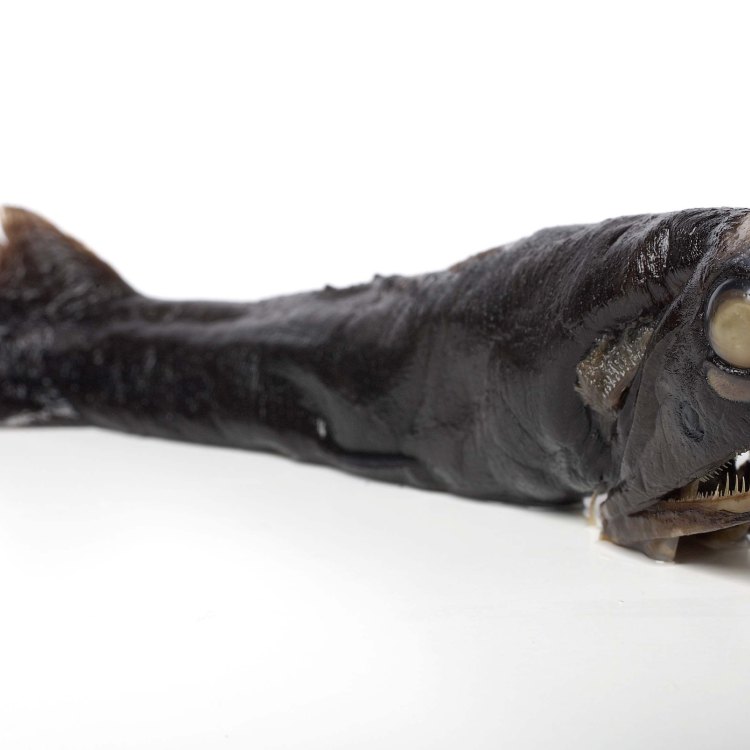
Malacosteus niger
The Mysterious Stoplight Loosejaw: Deep-Sea Hunter with Bioluminescent Lure
In the vast depths of the ocean, where sunlight barely reaches, lie some of the most enigmatic and fascinating creatures on the planet. One such creature is the Stoplight Loosejaw, a small but mighty fish with unique features that have captivated scientists and marine enthusiasts alike. With large jaws, rows of sharp teeth, and a bioluminescent lure, this fish may seem like something straight out of a science fiction movie. But in reality, it is a real-life deep-sea predator that has managed to thrive in one of the most extreme environments on Earth PeaceOfAnimals.Com.Adult Stoplight Loosejaws typically reach a size of up to 20 centimeters, making them relatively small compared to other fish species. However, what sets them apart is their unique adaptation to the dark depths of the ocean. Their large jaws and rows of sharp teeth allow them to consume larger prey, while their bioluminescent lure serves as a tool for hunting and attracting mates.
But what makes these fish truly fascinating is their home, the deep sea. The Stoplight Loosejaw is one of the deepest living fish species, found at depths of up to 3,000 meters. This means that they live in a world that is almost entirely devoid of sunlight, where the pressure is immense and the temperatures are freezing. Despite these extreme conditions, the Stoplight Loosejaw has managed to carve out a niche for itself in the deep sea, thanks to its unique features and behaviors.
One of the most mysterious aspects of the Stoplight Loosejaw is its reproductive behavior. It is known to be an oviparous species, meaning that it reproduces by laying eggs Sawfish. However, not much is known about its reproductive behaviors, as their deep-sea habitat makes it difficult for researchers to study them. It is believed that they may release their eggs near hydrothermal vents, where the high temperatures and chemical compounds may provide a suitable environment for their young to hatch and survive.
Another interesting fact about the Stoplight Loosejaw is its solitary social groups. Since not much is known about their behavior, it is unclear how these fish interact with each other, if at all. It is believed that they are solitary hunters, lurking in the darkness, waiting for their prey to come near their bioluminescent lure before launching an ambush. This adaptation allows them to conserve energy while still being effective hunters in the deep sea.
Despite their mysterious nature, the Stoplight Loosejaws have not been extensively studied, and their average lifespan remains unknown. They are believed to live for a significant amount of time, given their slow metabolism and the lack of predators in their deep-sea habitat. However, without further research and data, it is difficult to estimate their lifespan accurately.
Speaking of predators, very little is known about the predators of the Stoplight Loosejaw. Given their deep-sea habitat, they have likely adapted to be elusive and avoid detection by predators. However, it is possible that they may still fall prey to larger fish or marine mammals that inhabit the same depths. But again, without thorough research and observation, it is challenging to determine their predators accurately.
Unfortunately, the conservation status of the Stoplight Loosejaw is currently unknown. Due to its deep-sea habitat, it has not been studied as extensively as other fish species, leaving its conservation status up in the air. While there are no obvious threats to their population, it is possible that they may be impacted by human activities such as deep-sea fishing or climate change. It is crucial for scientists to continue studying and monitoring the population of the Stoplight Loosejaw to understand its conservation needs and protect it from any potential threats.
But why should we care about a small, deep-sea fish with limited knowledge about its behavior and population? The answer lies in its unique features and impact on the ecosystem. The Stoplight Loosejaw, like every other species, plays a crucial role in its ecosystem, and its presence or absence can have a ripple effect on other organisms. As an ambush predator, it helps regulate the population of its prey, maintaining a balance in the deep sea. Furthermore, its bioluminescent lure not only aids in hunting but also serves as a form of communication within its species. By studying the Stoplight Loosejaw, we can gain a better understanding of the deep-sea ecosystem and the unique adaptations required to thrive in such an extreme environment.
As for human use, the Stoplight Loosejaw is not applicable. Due to its habitat and limited knowledge about its behavior and population, it is not a fish that can be fished commercially or kept in aquariums. However, its unique features and mysterious nature make it a popular subject for scientific research and environmental documentaries.
In conclusion, the Stoplight Loosejaw is a fascinating and mysterious deep-sea fish that has managed to thrive in one of the most extreme environments on Earth. With its large jaws, bioluminescent lure, and solitary behavior, this fish has captured the imagination of scientists and nature enthusiasts. While there is still much to learn about the Stoplight Loosejaw, it serves as a reminder of the diverse and resilient creatures that inhabit our oceans. With further research and conservation efforts, we can ensure that this unique species continues to thrive and be a marvel of nature for generations to come.
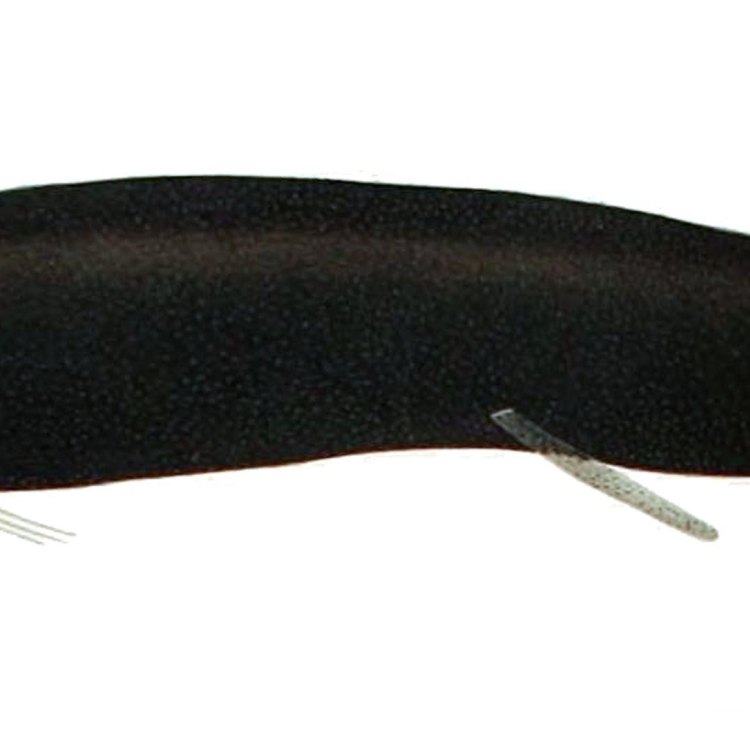
The Enigmatic Stoplight Loosejaw: An Exquisite Deep-sea Predator
Disclaimer: The content provided is for informational purposes only. We cannot guarantee the accuracy of the information on this page 100%. All information provided here may change without prior notice.


